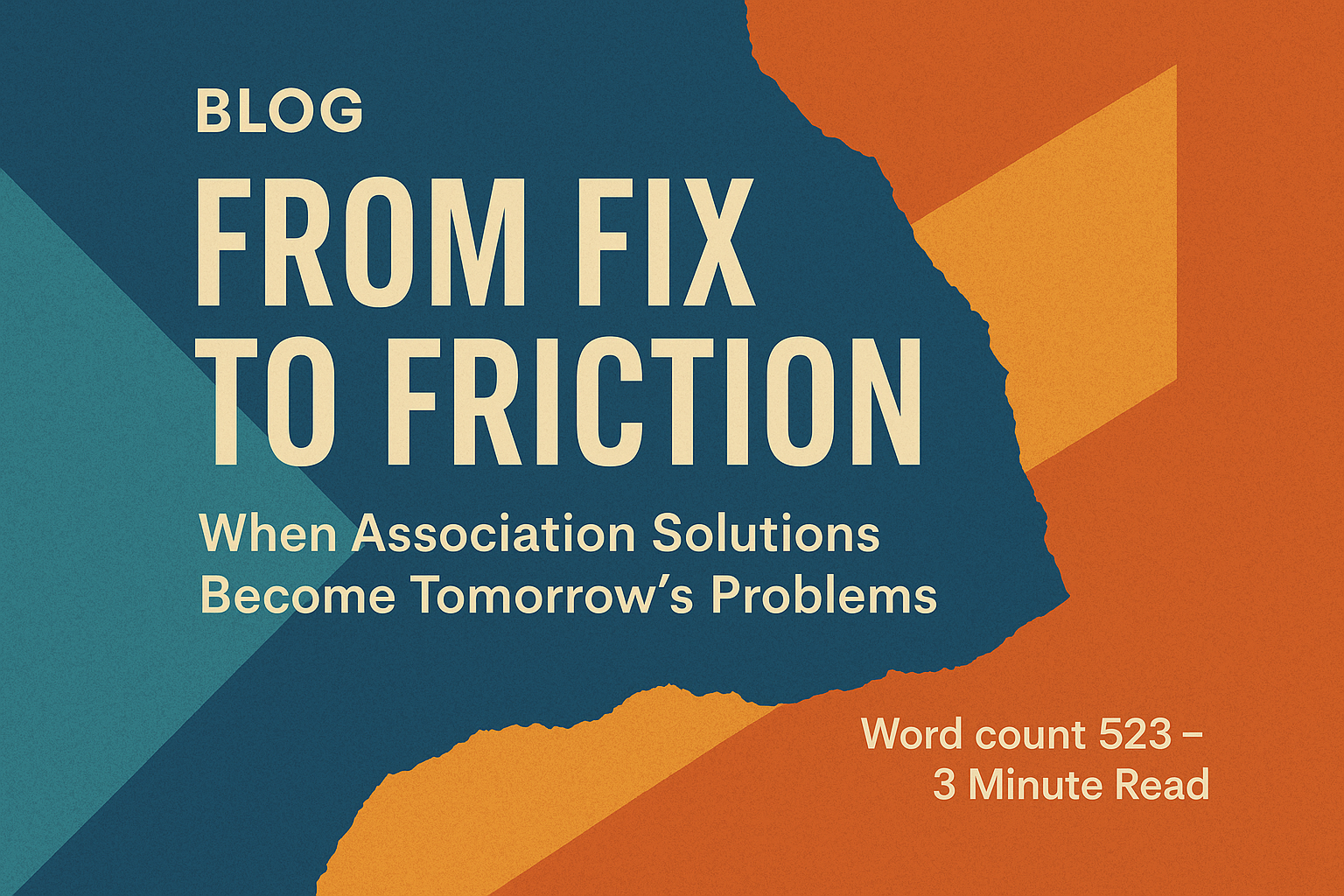
In association leadership, every solution is a small victory—until it becomes the next challenge.
Strategic leaders are wired to solve problems, adapt to change, and move forward. But the most successful among them knows that no solution exists in a vacuum. No matter how well-conceived, each decision lives within a broader system of behaviors, expectations, and evolving needs. And over time, even the best ideas can create unintended consequences that require fresh attention.
These solutions are not a sign of failure—it’s the natural evolution of living systems. It’s also one of the reasons strategic thinking must remain an ongoing practice, not a one-time event.
When the Fix Becomes Friction
Example 1: Hybrid Work and the Erosion of Culture
In the wake of the COVID-19 pandemic, many associations transitioned to hybrid or fully remote work. It was an intelligent, humane, cost-effective move that improved flexibility and helped retain talent. But five years later, leaders notice unintended side effects:
- Mentorship and informal collaboration have declined.
- New staff struggle to absorb organizational values and expectations.
- In-person events and networking have lost momentum and meaning.
- The sense of shared culture is thinning at the edges.
What started as a forward-thinking solution is now producing organizational drift. The answer isn’t to revert—but to reimagine. Hybrid culture requires intentional investments in connection, rituals, and leadership presence.
Example 2: Tiered Membership Models That Divide Instead of Deliver
To boost revenue and better serve diverse members, some associations have implemented tiered membership models—offering different levels of access to benefits based on payment.
At first, this seems like a win-win choice for the sustainability of the organization’s members. But here’s what many are discovering:
- Staff spend excessive time managing benefit logistics.
- Long-time members feel sidelined or downgraded.
- Community cohesion suffers as members experience the association in silos.
- Data tracking becomes fragmented, making engagement analysis difficult.
What was meant to increase value instead fractured identity. Members see the association as less a shared home and more as a marketplace.
Strategic Capacity Means Monitoring the Ripple Effects
These stories share a common truth: a solution is not a finish line—it’s a new starting point. Strategic capacity includes the ability to act, reflect, and recalibrate.
To build this muscle, leaders should regularly ask:
- What are the potential second-order effects of this decision?
- What assumptions might this solution be unintentionally reinforcing?
- Who benefits most—and who might be marginalized or overburdened?
- How will this decision shape behavior 6, 12, or 24 months from now?
Code: Embracing the Prototype Mindset
Being a future-ready association doesn’t mean getting it perfect the first time. It means treating every solution as a prototype—an informed experiment that demands curiosity, feedback, and periodic refinement.
So, the next time your board celebrates a big win, or a new policy rolls out with fanfare, remember success is only part of the story. The actual test is how—and when—you revisit that success to ensure it still serves your mission, members, and future.
Let’s keep asking the hard questions. Let’s keep learning forward. That’s how adaptive association leaders move from fixes to lasting progress.